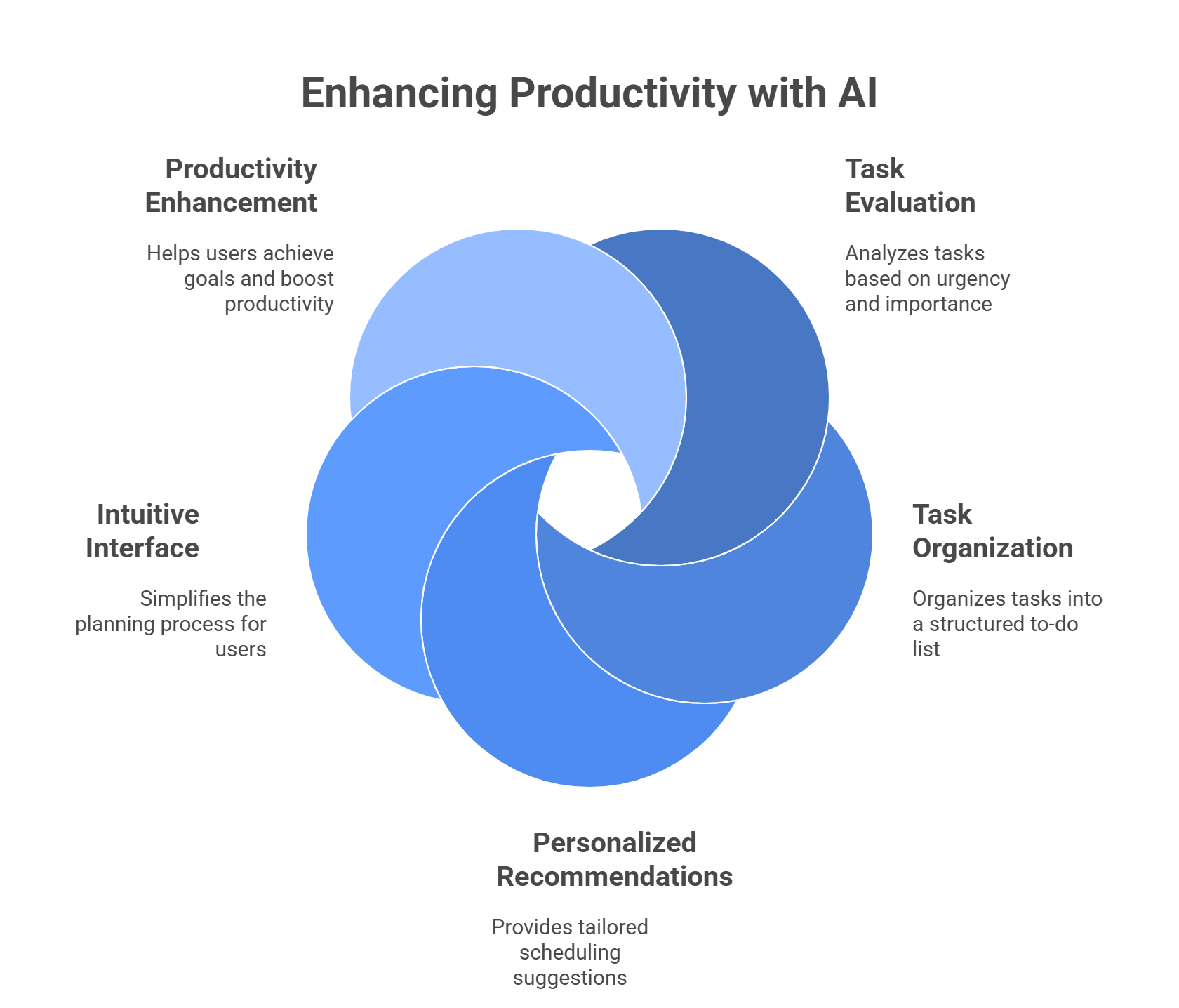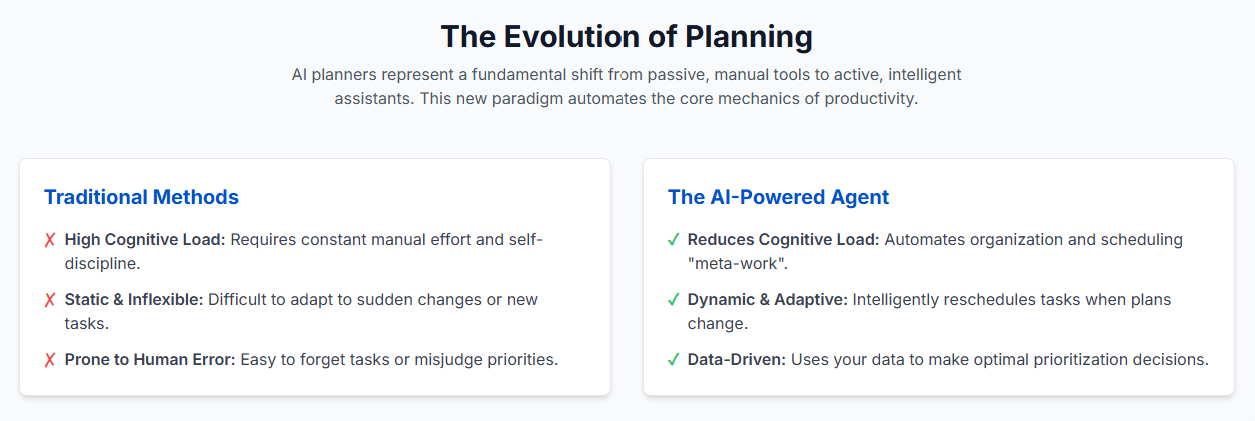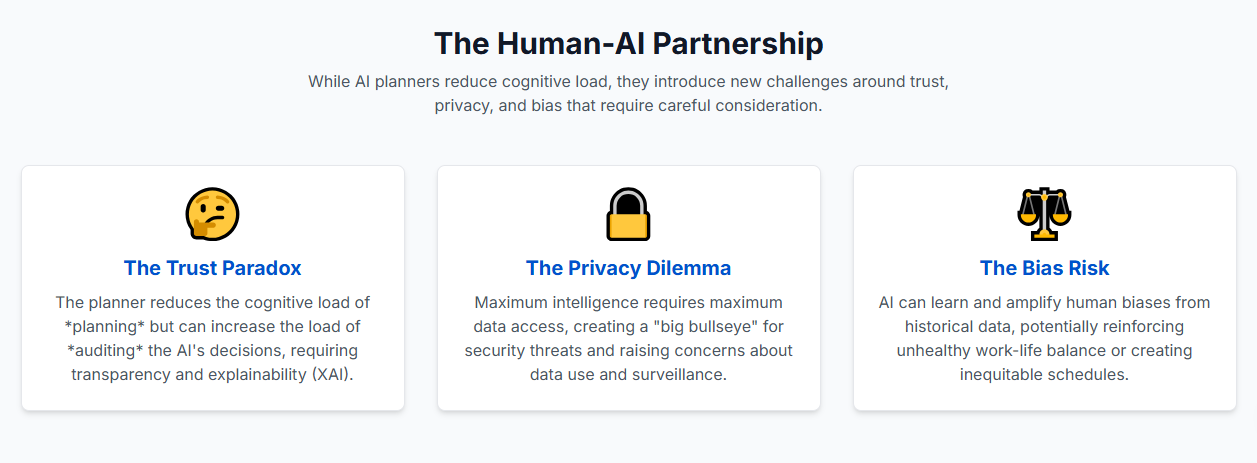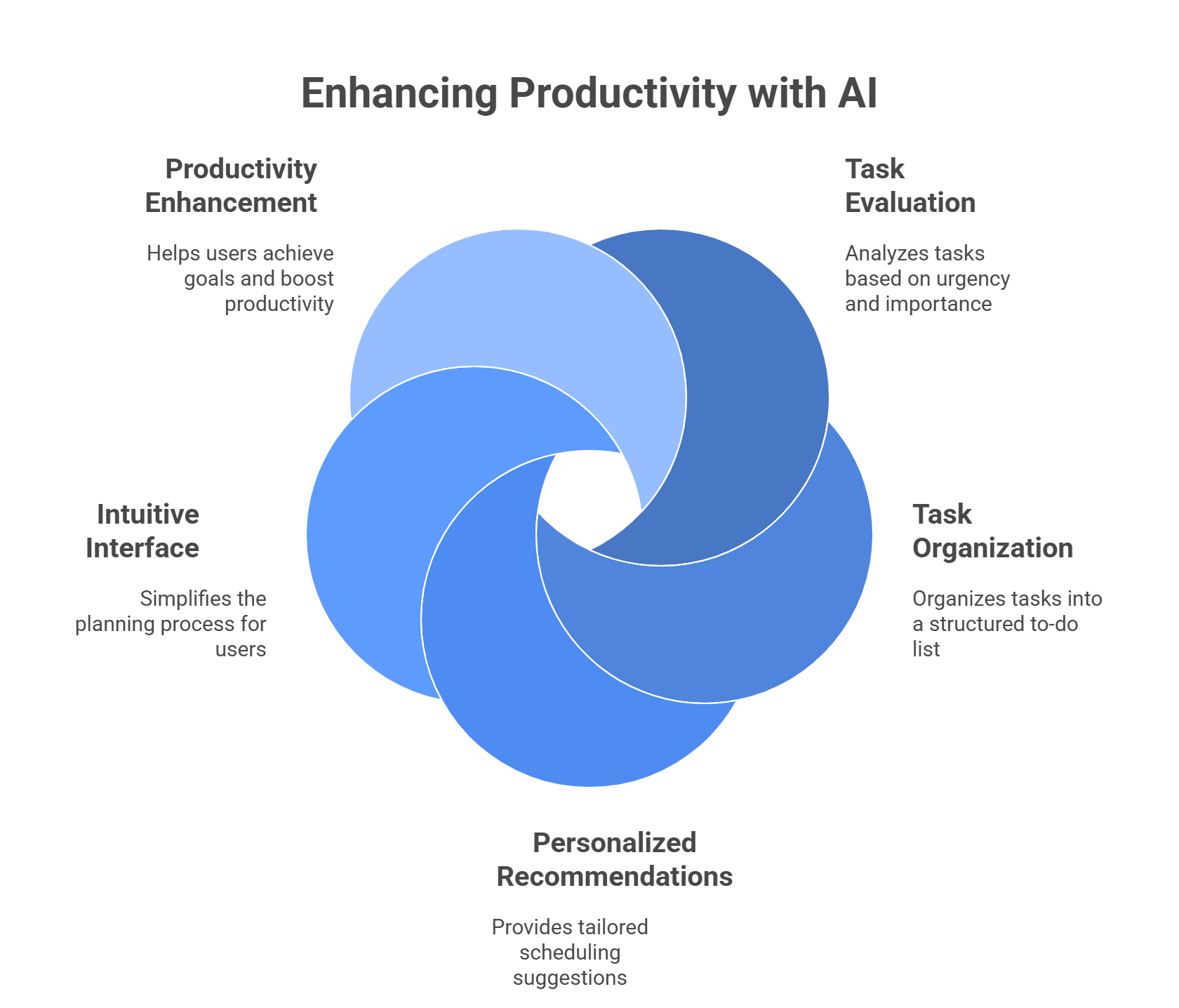Feeling overwhelmed by a never-ending flood of tasks, emails, and meeting requests? You’re not alone. For decades, we’ve juggled our commitments with a patchwork of tools—sticky notes, digital calendars, and countless to-do list apps. While helpful, these traditional methods place the entire cognitive burden of organizing, prioritizing, and scheduling squarely on our shoulders. It’s a constant, draining game of “calendar Tetris.”
But what if you had an intelligent assistant working 24/7 to manage that chaos for you? Not just a passive list, but an active partner that anticipates your needs, protects your focus time, and optimizes your entire schedule. This isn’t science fiction; it’s the reality of a new class of software powered by artificial intelligence.
Welcome to the age of the autonomous planner. These AI agents represent a monumental shift from passive record-keeping to active, automated assistance. This in-depth guide will explore this emerging landscape, breaking down how these tools work, the profound implications for our work and well-being, and what the future holds for your very own digital chief of staff.

Section 1: The New Era of Productivity: From Manual Lists to Intelligent Agents
To appreciate the revolution, we first need to understand the evolution. Traditional productivity systems, from a leather-bound planner to a simple digital app, are fundamentally user-operated. You are the engine. Methods like time blocking or the Pomodoro Technique are effective, but they demand constant manual effort and self-discipline. They store the information you input, but they possess no intelligence to act upon it.
This manual approach is time-consuming, prone to human error, and struggles to adapt when unexpected events throw your day into disarray. The AI-powered planner flips this paradigm on its head. You are no longer the operator; you are the manager of an intelligent system.
How AI Planners Reinvent Your Workflow
The core magic of these platforms can be broken down into a powerful three-stage process that directly addresses the shortcomings of traditional methods:
- Unified Task Aggregation: The first step is to create a complete inventory of your commitments. An AI planner connects to your entire digital ecosystem—syncing with your Google or Outlook calendar, reading your emails, pulling tasks from Slack messages, and integrating with project management tools like Asana, Jira, or Notion. Everything is brought into one central “inbox.”
- AI-Powered Prioritization: This is where the real intelligence shines. Instead of you manually sorting through dozens of tasks, the AI analyzes this aggregated data to rank everything. It looks at hard deadlines, project dependencies, priority labels you’ve set, and—most impressively—learns from your past behaviour to understand what is truly important versus what is simply urgent.
- Automated Scheduling: Finally, the agent intelligently places these prioritized tasks directly into your calendar. It finds the optimal time slots based on your availability, energy levels (in more advanced tools), and the task’s requirements. If an urgent meeting pops up, the system doesn’t just flag a conflict; it automatically reshuffles your other tasks to accommodate the change.

The primary benefit of this shift is a massive reduction in cognitive load. By automating the mechanics of planning—the constant shuffling, the mental calculus, the decision fatigue—these tools free up your mental bandwidth. This allows you to dedicate your energy not to organizing work, but to doing the deep, high-value work that truly matters.
A Glimpse into the AI Planner Market
The market for these intelligent assistants is booming, with several key players emerging, each with a slightly different focus:
- For the Power User & Team: Motion has aggressively positioned itself as a comprehensive productivity suite. It combines powerful AI auto-scheduling for individuals with robust project management features, allowing entire teams to have their work automatically planned and optimized.
- For Calendar Optimization: Reclaim.ai focuses on being the “smart” layer on top of your existing Google Calendar. It excels at automatically finding the best time for your tasks, habits, and meetings, with a strong emphasis on protecting precious blocks of “focus time” for both individuals and teams.
- For Intentional Planning & Wellness: Sunsama takes a gentler approach. Instead of full automation, it acts as a daily planning coach, guiding you to build a balanced and realistic workload. It helps you avoid burnout by being intentional about what you commit to each day.
- For Centralizing Knowledge: Saner.AI targets “intensive knowledge workers” by creating a universal inbox that not only extracts tasks but also helps organize notes and information from emails, Slack, and Notion, using AI to make your knowledge base smarter.

The lines between these categories are blurring. Project management giants are adding AI scheduling, and AI schedulers are building out project management features. The trend is clear: the future is a single, integrated ecosystem for managing all aspects of your work.
Section 2: Under the Hood: How Do AI Planners Actually Work?
It’s easy to think of these tools as a single “AI brain,” but in reality, they are a sophisticated pipeline of interconnected technologies. Understanding this architecture helps demystify the magic and appreciate what’s truly happening with your data.
Step 1: Connecting to Your Digital Life (APIs)
The foundation of any AI planner is its ability to see your commitments. This is done through Application Programming Interfaces (APIs). Think of an API as a secure messenger that allows different software applications to talk to each other. When you grant an AI planner access, you are using APIs to let it:
- Read and write to your calendar (e.g., Google Calendar API, Microsoft Graph API) to see when you’re busy and to block out time for tasks.
- Access your communications (e.g., Slack API, Gmail API) to scan for potential tasks and commitments.
- Sync with your project tools (e.g., Asana API, Jira API) to pull in your assigned work and keep everything in harmony.
This secure, permission-based access is the bedrock upon which all subsequent intelligence is built.
Step 2: Teaching the AI to Read (Natural Language Processing)
Once the raw text from an email or Slack message is collected, the system needs to understand it. This is the job of Natural Language Processing (NLP), a field of AI focused on interpreting human language.
Imagine an email that says: “Could you please review the Q3 marketing slides and send your feedback to me and Jane by EOD Friday?”
An NLP model processes this sentence to extract structured information:
- Intent: It recognizes “Could you please…” as a request or a task.
- Entities: It identifies the key pieces of information:
- Task: “review the Q3 marketing slides”
- Deadline: “EOD Friday”
- People: “me,” “Jane”

Modern systems use powerful Large Language Models (LLMs) like Google’s Gemini to perform this extraction with incredible nuance and accuracy, turning your unstructured conversations into a clean, actionable to-do list.
Step 3: The Brain of the Operation (Machine Learning Prioritization)
With a list of tasks, how does the system know what to schedule first? This is the intellectual core of the AI planner, powered by machine learning (ML).
The AI calculates a priority score for every single task by analyzing dozens of variables, including:
- Hard Constraints: Deadlines and dependencies (e.g., “Task B cannot start until Task A is finished”).
- User Input: Priority labels you set (e.g., P1, P2) or frameworks like the Eisenhower Matrix (Urgent/Important).
- Learned Patterns: This is the most powerful part. The ML model analyzes your historical data. It learns that tasks from your CEO are always high priority. It learns that you tend to procrastinate on “writing” tasks and might need more time. It learns which projects are most critical to your goals.
By looking at pairs of tasks and predicting which one is more important relative to the other, the system builds a perfectly ordered list that reflects your true priorities, not just the one that’s shouting the loudest.
Step 4: The Art of the Schedule (Optimization Algorithms)
With a prioritized list, the final step is placing each item on your calendar. This is a complex optimization puzzle. The system uses advanced algorithms, sometimes inspired by genetics or physics, to find the best possible schedule. It considers your meeting-heavy days, your desire for a lunch break, and your focus time needs to construct a schedule that is not just full, but effective and sustainable.
Some advanced systems even use Reinforcement Learning, where the AI learns the best scheduling “policy” over time through trial and error, getting smarter and more personalized the more you use it.
Section 3: The Human Side of AI Planning: Trust, Risks, and the Future
Integrating an autonomous agent into the personal domain of our time creates a new and complex relationship between human and machine. These tools offer immense benefits, but they also come with significant responsibilities and risks that every user should understand.
The Double-Edged Sword: Cognitive Load vs. Skill Atrophy
The greatest promise of AI planners is freeing you from the mental drudgery of scheduling. However, there is a risk of over-reliance. If we offload all planning and organizational thinking to an algorithm, could our own executive function skills begin to atrophy? This phenomenon, known as automation bias, is the tendency to blindly trust the output of an automated system.
The key is to adopt a “human-in-the-loop” mindset. Use the AI to handle the 80% of scheduling that is tedious and repetitive, but retain final say. Critically evaluate its suggestions and use the mental energy you’ve saved for more strategic, creative, and long-range planning—activities that still benefit from the human touch.

Your Data, Their Power: The Privacy & Security Imperative
For an AI planner to be effective, it requires unprecedented access to your digital life: your calendar, your emails, your private messages. This concentrates an incredible amount of sensitive personal and corporate data in one place, making the security and privacy policies of these companies paramount.
- Data Privacy: What is the company doing with your data? Is it being used to train other models? Can they comply with regulations like GDPR, which includes the “right to be forgotten”? These are critical questions to ask before signing up.
- Security: The system’s reliance on third-party APIs means its security is only as strong as its weakest link. A vulnerability in a connected app could potentially expose your data. Look for companies that take a “zero trust” approach to security, rigorously authenticating every single connection.
The Future is Proactive: Your Algorithmic Coach
The current generation of AI planners is largely reactive. The future is proactive and anticipatory. The next wave of agents won’t just schedule the tasks you give them; they will anticipate your needs before you do.
Even more exciting is the integration of affective computing—systems that can understand human emotion and well-being. Imagine a future where your AI planner syncs with your wearable device (like an Apple Watch or Fitbit).
- It detects from your heart rate variability that your stress levels are rising and proactively schedules a 10-minute break.
- It sees you had a poor night’s sleep and automatically reschedules a cognitively demanding task from the morning to the afternoon, when you’re likely to have more energy.
This transforms the agent from a productivity tool into a genuine partner in your well-being, optimizing not just for task completion, but for a sustainable and healthy life.
Conclusion: Your New Autonomous Assistant
AI personal planners are more than just a better calendar. They are the first step towards a future of sophisticated, autonomous agents that act as our digital colleagues. They automate the noise so we can focus on the signal.
However, this powerful technology requires a new kind of digital literacy. The journey forward is a partnership. By embracing a “human-in-the-loop” approach—leveraging automation while retaining strategic control and demanding transparency—we can unlock a level of productivity and focus that was previously unimaginable. The future of work isn’t about being replaced by AI; it’s about being amplified by it. The only question is, what will you do with all the time and mental energy you get back?



